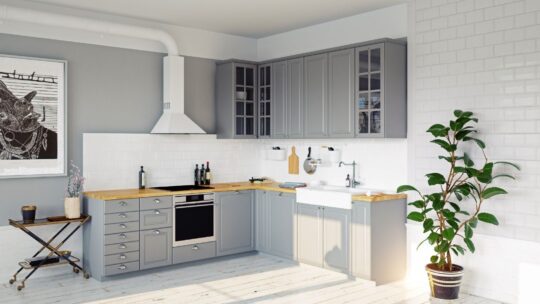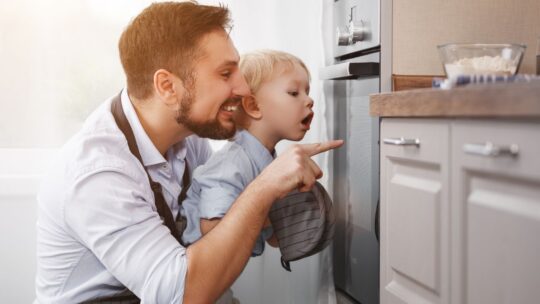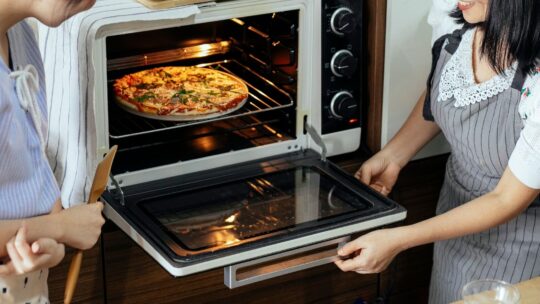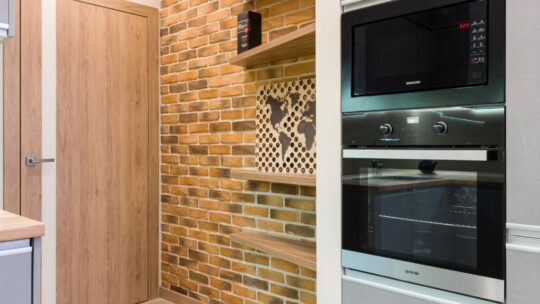
You don’t have to worry if you’re shopping for an oven and are overwhelmed by the number of options available today. Instead, you need to determine several things to help you find out the type of oven ideal for your situation.
Oven Size/Capacity and Kitchen Space
The size of an oven would determine how much food you could cook in one batch. If you’re cooking for one or two, then even the smallest capacity will do. However, if you’re going to cook for a family or for food service establishments like a coffee shop or restaurant, a bigger oven would save you time (because you’ll be cooking one batch instead of 2 or more) and reduce electricity consumption as well.
Once you’ve considered this, you should then think about where the oven will be placed. Is it going to be a countertop appliance? Are you open to building a space for a commercial oven? How much is kitchen space available for your oven?

Oven Functions
Modern ovens have many functionalities and “modes” built into the device. You’ll find buttons for broiling, convection bake, defrosting, and others. Here are three functions that I believe is a MUST for any oven you decide to buy:
- Auto Function: An oven’s “auto function” has pre-set temperature and time for specific menus. For example, if you want to cook an oil-free recipe or explore how to ferment ghee or make curd. There are also cuisine-specific auto settings (such as Indian or Korean food) or technology-specific (like Tandoor tech) that would allow you to cook a wide range of recipes quickly and without having to guess the settings.
- Sabbath Mode: When you see “Sabbath mode” in an oven, this refers to a function that keeps food warm for an extended period. I love how you can prepare food for a group of people early and the meals will remain warm until everyone arrives.
- Child lock: If you have kids, this function will give you peace of mind, especially when you’re not at home.
Oven Wattage and Power Supply
Oven wattages differ from one oven to the next, usually between 800 to 1200 watts. Generally speaking, the higher wattage a stove has, the faster it could cook your food. However, if you’re planning to use an oven for reheating leftovers for two people, a low-watt oven will often do.
Similarly, you’d also want to check the power supplies in your kitchen, restaurant, or other places you’ll be using the oven. This is especially true if the oven you’re buying requires higher amounts of power.

Convection vs. Other Heating Types
When choosing between ovens, it is easy to get confused with similar terms. For example, a convection oven can broil and bake, but so does a toaster oven. Likewise, a microwave oven can defrost and reheat, but so does any conventional oven.
An oven with convection heating is ideal because it saves time and energy costs. Its built-in fan circulates hot air inside the oven, distributing heat more evenly and faster.
Convenience Features
There are oven features that aren’t prioritized in advertising but will be very handy for day-to-day usage. For example, not all ovens have glass doors. If you’re a visual cook/baker and need to see if your food is “done,” glass doors would be a convenient way to check doneness.
Not only do glass doors help you see through the oven, but it also prevents heat from escaping the oven while cooking. Most of the time, when people open the oven to check if what they’re baking or cooking is done, the temperature reduces and as a result, requires additional time to cook properly.
A timer (so the oven turns off once the time is up) and delayed start (a function that tells the oven to start cooking at a particular time) are two super convenient features.

Dual Ovens
If you’re a first-time oven buyer, you probably think that any model is enough for your cooking needs. But wait until you host a Thanksgiving dinner, and you’ll be faced with a dilemma that is all too common: how do you cook a turkey AND another side dish in one batch? Unfortunately, the answer is, you can’t if your oven is NOT a dual oven.
For those who see themselves multiple baking meals at a time, choose a dual oven with separate 2-3 cooking compartments (all with different temperatures and settings). This feature is an ultimate time-saver, but it isn’t a common recommendation.
The considerations above are just some of the underprioritized items people should know before shopping for an oven. Other details you should look into prior to buying an oven include cord length, extra racks, rotisserie tools, accessories included, and an extended warranty.























